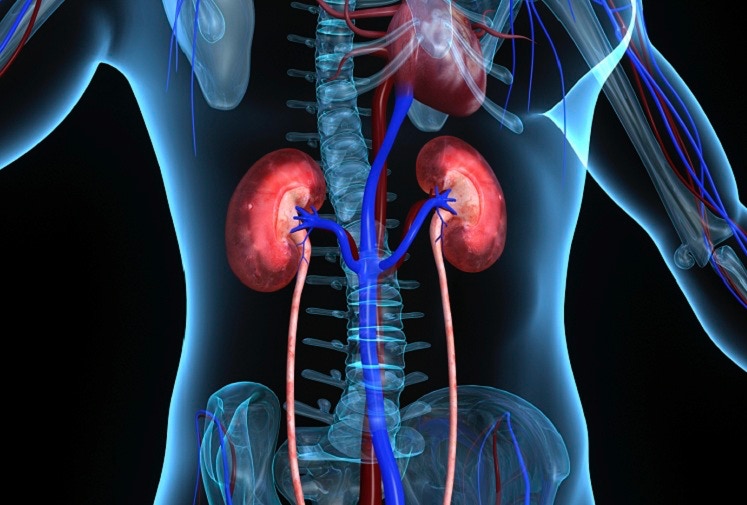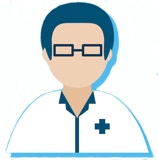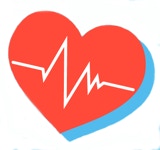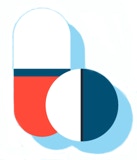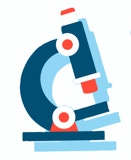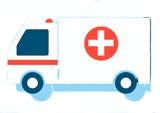
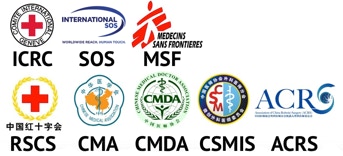
Doctors
Institutions
Conditions
Drugs
Insurances
TCM
Research
About Us
Contact Us
What is kidney failure?
Kidney failure happens when damage results in loss of normal kidney function. It may also be called end stage renal disease (ESRD). There are 2 types of kidney failure—acute and chronic.
Acute kidney failure starts abruptly. It can sometimes be reversed.
Chronic kidney failure progresses slowly over at least 3 months. It can lead to permanent kidney failure.
What causes kidney failure?
Conditions that may lead to acute or chronic kidney failure may include:
Acute kidney failure
Rhabdomyolysis, kidney damage that can happen from muscle breakdown due to severe dehydration, infection, or other causes
Decreased blood flow to the kidneys from blood loss or shock
A blockage along the urinary tract
Hemolytic uremic syndrome, blockage of the small vessels in the kidney, often caused by an E. Coli infection
Infection or certain medicines that may be toxic to the kidneys
Glomerulonephritis, inflammation of the tiny units within the kidney where blood is cleaned, impair the kidney’s ability to filter urine
Any condition that impairs the flow of oxygen and blood to the kidneys, such as heart attack
Chronic kidney failure
Diabetic nephropathy, kidney damage due to high blood sugar
High blood pressure
Lupus, an immune system disease
Urinary track blockage
Alport syndrome, a genetic disorder
Nephrotic syndrome, a condition that leads to too much protein in the urine
Polycystic kidney disease, a genetic disorder that causes fluid-filled cysts in the kidneys
Cystinosis, a genetic problem in which the amino acid builds up within the cells in the kidneys
Interstitial nephritis or pyelonephritis, inflammation of the small structures in the kidney
What are the symptoms of kidney failure?
The symptoms for acute and chronic renal failure may be different. These are the most common.
Acute (symptoms depend on the underlying cause)
Fever
Weakness
Fatigue
Rash
Diarrhea
Poor appetite
Severe vomiting
Abdominal pain
Back pain
Muscle cramps
No urine output or high urine output
Pale skin
Nosebleeds
Inflammation of the eye
Chronic
Poor appetite
Vomiting
Bone pain
Headache
Insomnia
Itching
Dry skin
Fatigue with light activity
Muscle cramps
High urine output or no urine output
Urinary incontinence
Pale skin
Bad breath
Hearing problems
Irritability
Poor muscle tone
Change in mental alertness
Metallic taste in mouth
The symptoms of acute and chronic kidney failure may look like other health problems. Always talk with your healthcare provider for a diagnosis. You may be referred to a kidney specialist known as a nephrologist.
How is kidney failure diagnosed?
Your healthcare provider will review your medical history and do a physical exam. Other tests may include:
Blood tests. Blood tests will check blood cell counts, electrolyte levels, and kidney function
Urine tests.
Renal ultrasound. In this test, a transducer is passed over the kidney sending sound waves that bounce off the kidney. Pictures are sent to a video screen. The test is use to check the size and shape of the kidney, and to find a mass, kidney stone, cyst, or other blockage or problems.
Kidney biopsy. This is the removal of tissue samples (with a needle or during surgery) from the body for exam under a microscope. It’s done to see if cancer or other abnormal cells are present.
Computed tomography scan (also called a CT or CAT scan). This is an imaging test that uses X-rays and a computer to make detailed images of the body, including the kidneys. CT scans are more detailed than general X-rays. Contrast CT usually cannot be done when there is kidney failure.
What is the treatment for acute and chronic kidney failure?
Your healthcare provider will figure out the best treatment based on:
How old you are
Your overall health and medical history
How sick you are
How well you can handle specific medicines, procedures, or therapies
How long the condition is expected to last
Your opinion or preference
Treatment may include hospitalization and:
Intravenous (IV) fluids
Diuretic therapy (medicines to increase urine output)
Closely watching electrolytes such as potassium, sodium, and calcium and heart rhythm, as the heart muscle is at risk for changes in these electrolytes
Medicines (to control blood pressure)
Specific diet needs
In some cases, you can have electrolyte problems and toxic levels of waste products normally removed by the kidneys. You may also develop fluid overload. Dialysis may be needed in these cases.
Treatment of chronic kidney failure depends on the how much kidney function you still have.
Dialysis
Dialysis is used to treat both acute and chronic kidney failure. It involves removing waste substances and fluid from the blood that are normally removed by the kidneys. Dialysis may also be used for people who have been exposed to or ingested toxic substances. In this case, dialysis is used to prevent kidney failure. There are 2 types of dialysis; peritoneal and hemodialysis.
Peritoneal dialysis
Peritoneal dialysis is done by surgically placing a soft, hollow tube, called a catheter, into the lower abdomen near the navel. A solution called dialysate is passed through the tube into the peritoneal cavity. This is the space in the abdomen that houses the organs. It is lined by 2 membrane layers called the peritoneum. The solution is left in the abdomen for a certain amount of time. There, it soaks up the waste products and toxins through the peritoneum. The fluid is drained from the abdomen, measured and discarded. There are 3 different types of peritoneal dialysis:
Continuous ambulatory peritoneal dialysis (CAPD). This type does not need a machine. Exchanges, often referred to as passes, can be done 3 to 5 times a day during waking hours.
Continuous cyclic peritoneal dialysis (CCPD). This type needs a dialysis machine that can be used in the home. This type of dialysis is done automatically, even while you are asleep.
Intermittent peritoneal dialysis (IPD). IPD uses the same type of machine as CCPD, but treatments take longer. IPD can be done at home, but usually is done in the hospital.
Possible complications of peritoneal dialysis include an infection or inflammation of the peritoneum. This is called peritonitis. It causes fever and stomach pain.
A dietitian will help you plan your meals based on your healthcare provider's orders. Generally:
You may have special protein, salt, and fluid needs.
You may have special potassium restrictions.
You may need to cut calories. The sugar in the dialysate may cause weight gain.
Hemodialysis
Hemodialysis can be done at home or in a dialysis center or hospital. An access site is surgically made, usually in your arm. This involves joining an artery and a vein together. After access has been made, you will be connected to a large hemodialysis machine that drains the blood. The blood is bathed in a dialysate solution which removes waste substances and fluid. Then the clean blood is returned to your bloodstream.
Hemodialysis is usually done several times a week and lasts for 4 to 5 hours. During treatment you can read, write, sleep, talk, or watch TV.
At home, hemodialysis is done with the help of a partner, often a family member or friend. If you choose to do home hemodialysis, you and your partner will get training.
Possible complications of hemodialysis include muscle cramps and a sudden drop in blood pressure. This may cause you to feel dizzy or weak, or sick to your stomach.
By following the proper diet and taking medicines, as prescribed by your healthcare provider, you may be able to avoid complications. A dietitian will work with you to plan your meals, according to your healthcare provider's orders. Generally:
You may eat foods high in protein such as meat and chicken (animal proteins).
You may need to limit foods containing potassium.
You may need to limit the amount you drink.
You may need to avoid salt.
You may need to limit foods containing mineral phosphorus (such as milk, cheese, nuts, dried beans, and soft drinks).
Other treatment choices may include:
Medicines (to help with growth, prevent bone density loss, and/or to treat anemia)
Diuretic therapy (medicines to increase urine output)
Specific diet changes
Kidney transplant
Complications of kidney failure
Because the kidneys have many functions, the complications of kidney failure can affect many body systems. Complications may include:
Anemia (low red blood cell count)
Problems with the heart and blood vessels
Bone disease
Pain in the bones, joints, and muscles
Decreased mental function, including confusion and dementia
Nerve damage in the arms and legs
A greater risk of getting infections
Poor nutrition
Skin changes, including dryness and itching
Living with kidney failure
People with kidney failure are living longer than ever. Dialysis treatment is not a cure for kidney failure, but will help you feel better and live longer. Over the years, kidney failure can cause other problems such as bone disease, high blood pressure, nerve damage, and anemia (having too few red blood cells). Discuss how to prevent and treat these problems with your healthcare provider.
When should I call my healthcare provider?
If your symptoms get worse or you have new symptoms, let your healthcare provider know.
Key points about kidney failure
Kidney failure is complete failure of the kidneys to regulate normal functions. This includes fluid balance, blood pressure, acid and base balance, electrolytes, red blood cell production, and excretion of metabolic toxins and wastes.
The outlook is poor for people with kidney failure. As toxins and fluid build up, the disease can become life threatening.
Treatment involves peritoneal and hemodialysis to replace the function of the kidneys.
Kidney transplant may be a choice for long term survival.
Next steps
Tips to help you get the most from a visit to your healthcare provider:
Know the reason for your visit and what you want to happen.
Before your visit, write down questions you want answered.
Bring someone with you to help you ask questions and remember what your provider tells you.
At the visit, write down the name of a new diagnosis, and any new medicines, treatments, or tests. Also write down any new instructions your provider gives you.
Know why a new medicine or treatment is prescribed, and how it will help you. Also know what the side effects are.
Ask if your condition can be treated in other ways.
Know why a test or procedure is recommended and what the results could mean.
Know what to expect if you do not take the medicine or have the test or procedure.
If you have a follow-up appointment, write down the date, time, and purpose for that visit.
Know how you can contact your provider if you have questions.
